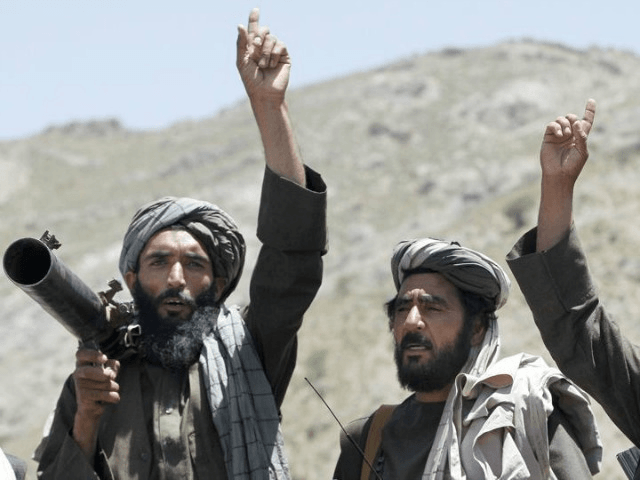The number of terrorist attacks and the number of provincial districts under the control or influence of jihadist groups in Afghanistan, primarily the Taliban and to a lesser extent the Islamic State (ISIS/ISIL), have reached unprecedented levels under the Trump administration.
The U.S. Special Inspector General for Afghanistan Reconstruction (SIGAR) published these conclusions in a quarterly report to Congress released this week. SIGAR’s assessment is a testament to the deteriorating security situation in Afghanistan that U.S. President Donald Trump inherited.
The conditions have taken a turn for the worse after Trump implemented his new Afghan war strategy, a plan spearheaded by White House National Security Adviser H.R. McMaster with the help of the Pentagon.
Although the United States has invested more than $714 billion in the Afghanistan war since it began raging in October 2001, terrorists, notably the Taliban, now control or contest more territory than during any other time since the United States military removed the Taliban regime in late 2001.
Meanwhile, the U.S.-backed Afghan government steadily loses parts of the country and the population within those areas.
Across Afghanistan, 407 districts exist within the 34 provinces.
Terrorists, primarily the Taliban, controlled (54 districts) or contested (122 districts) more than 43 percent of Afghanistan as of late August. The Long War Journal argues that militants now control about 45 percent of the war-ravaged nation.
An estimated 12 million Afghans live in the now Taliban-held area, which amounts to more than one-third of the entire population of 32.5 million, the watchdog agency learned from U.S.-Forces in Afghanistan (USFOR-A).
SIGAR notes that the terrorists increased their control of Afghan territory by nine districts throughout the last six months.
During that same period, the Afghan government lost control of some areas, reveals the inspector general, noting, “The Afghan government’s district and population control deteriorated to its lowest level since SIGAR began analyzing district-control data in December 2015 and population-control data in September 2016.”
As of late August, the U.S.-backed Afghan government controlled about 57 percent (231 districts) of Afghanistan, marking “a one-point decline over the last six months and a more than six-point decline from the same period last year,” reports SIGAR.
John Sopko, the chief at SIGAR, acknowledges that “the majority, 20.7 million (63.7%), still live in areas controlled or influenced by the government.”
The number of armed clashes — which have been predominantly perpetrated by the Taliban against U.S. troops and their allies — have also escalated, reaching “an all-time high,” SIGAR points out in a press release.
Sopko acknowledges that most armed clashes between terrorists and U.S.-backed Afghan forces have historically occurred in provinces near or at Afghanistan’s border with Pakistan, which is also where most American military and Afghan casualties have occurred.
SIGAR reports:
From June 15 through August 31, 2017, the UN recorded 5,532 security incidents…Armed clashes between security forces and the Taliban comprised 64% of recent security incidents, an increase of 5% since 2016. This quarter’s figures show a record level of armed clashes in 2017 compared to previous years of the conflict
Under Trump’s new strategy, the United States has vowed to pressure Pakistan to stop providing sanctuary to terrorists like the Taliban and its allies, al-Qaeda and the Haqqani Network, who are constantly fighting and killing troops in Afghanistan.
Moreover, the number of civilian casualties attributed to U.S.-NATO (177) and Afghan (289) air operations during the first nine months of 2017 have increased by more than 50 percent, yielding a total of 466 casualties, SIGAR learned from the United Nations Assistance Mission in Afghanistan (UNAMA).
“More than two-thirds of these victims were reportedly women and children,” reports Sopko.
Under Trump, the number of U.S. bombs dropped on the Taliban and ISIS have dramatically increased, reaching historic levels when compared to similar periods in previous years.
The U.S. military has disputed the casualty figures that the U.N. has linked to the American air war over Afghanistan.
SIGAR notes:
According to UNAMA, air strikes account for roughly 6% of all civilian casualties. In vetting comments, [U.S. forces] strongly disagreed with UNAMA’s assessment and methodology, offering instead that it had confirmed 43 civilian casualties caused by international air strikes during this period.
The inspector general conceded that terrorists, primarily the Taliban, are responsible for the majority (5,167, or 64 percent) of the total 8,019 civilian casualties from January 1, 2017, through September 30, 2017.
U.S. military casualties have also begun to increase in response to President Trump’s decision to deploy an estimated 3,500 American troops, bringing the total to about 11,000, as part of his plan to intensify the war against the Taliban, al-Qaeda, ISIS, and other terrorists in Afghanistan.
“From January 1 through August 23, 2017, 10 U.S. military personnel were killed in Afghanistan, and 48 were wounded,” notes SIGAR. “This is an increase of seven personnel killed in action, and 22 wounded in action since last quarter, and double the personnel killed in action when compared to the same periods in 2015 and 2016. USFOR-A also reported that one civilian contractor was wounded in action since last quarter.”

COMMENTS
Please let us know if you're having issues with commenting.